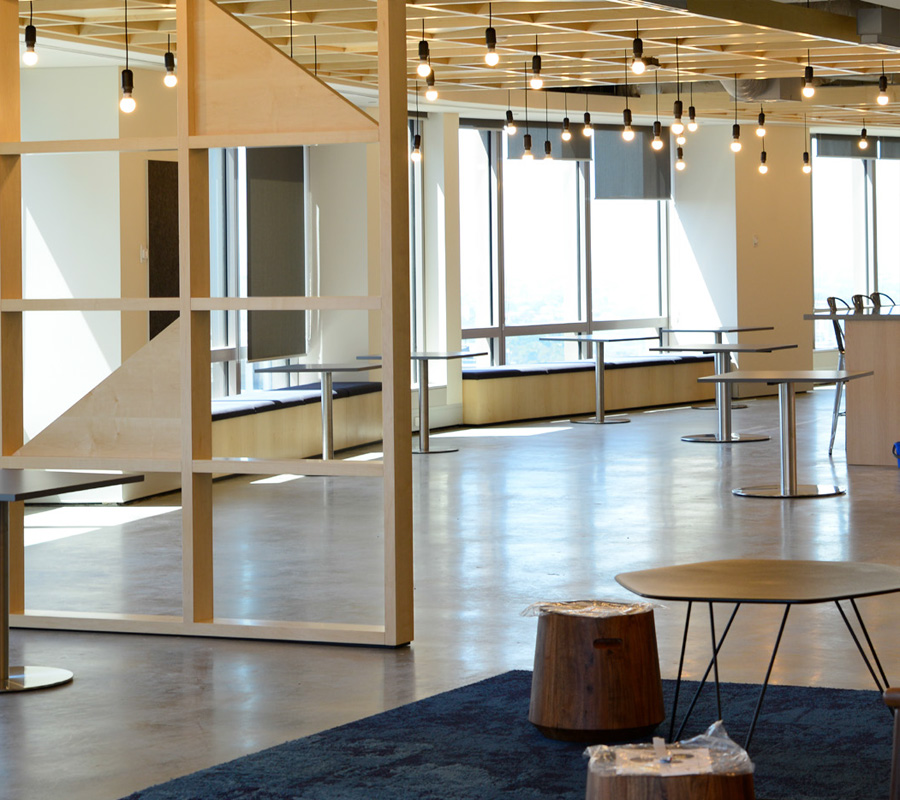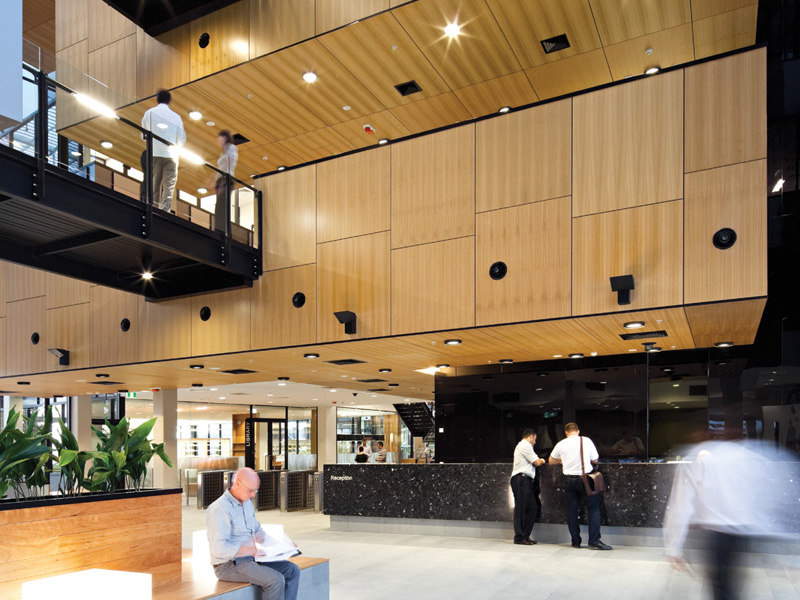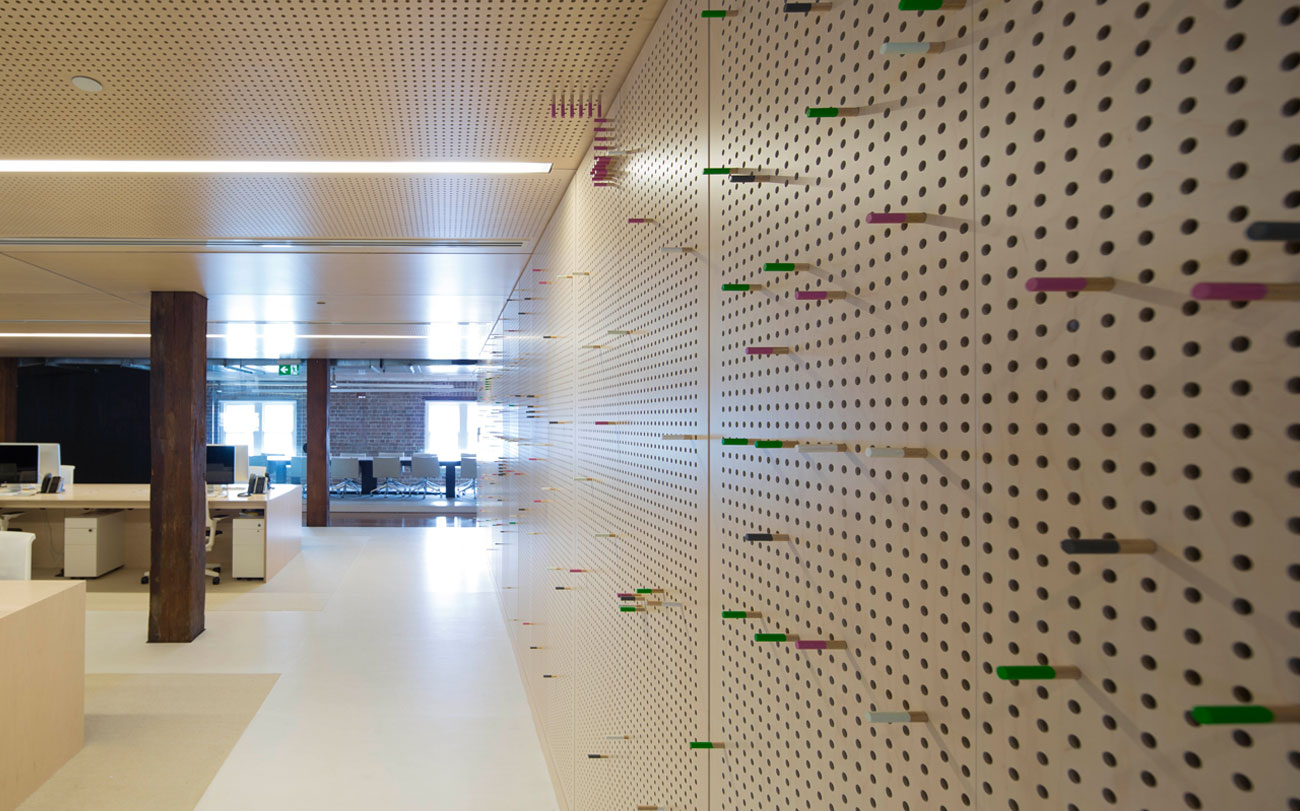
Introduction
Due to the nature of how media is consumed today, architecture is often seen more than it’s heard. It can be easy to forget that the spaces you see in print, on the web, or on Instagram each have specific acoustical qualities that help to define how they’re understood and occupied to a level beyond what is visible. Acoustics can make or break a space depending on what its purpose is meant to be, and so the decision to incorporate acoustics into a design from the beginning is a wise one. Like any other aspect to consider such as lighting, there is no one-size-fits-all solution. Different intended programs require different acoustic qualities, and so acoustics must be designed with a space’s purpose in mind. Innovative and fully functional environments can only be created if acoustics are taken into account from the outset.
Examining architectural acoustics from a musical perspective, music has historically developed from the slowly evolving melodies designed to be played in the stone walled gothic cathedrals of the Middle Ages, to punk rock whose details can only be heard in an environment made up of uneven walls and a looming ceiling to create uneven acoustic reflections, and plenty of bodies to absorb reverberant noise.1
However, just as music evolved to fit those spaces, so too were spaces designed for specific kinds of music. An opera house would not be constructed specifically with the intention of playing hip-hop inside. Likewise, a “buzzy” café would not be designed to have no reverberation, which would have the unwanted effect of deadening the atmosphere, and a doctor’s office should not be letting traffic noise from the outside intrude in. Proper foresight is required if a desired soundscape is to be achieved.
Like any other system, proper specification and installation is imperative to ensure the best acoustic results for a space. For that purpose, sound or acoustic engineers should be engaged in order to convert a client’s desired acoustic qualities or soundscape into an achievable outcome, for a manufacturer to subsequently deliver on.
The importance of specifying adequate acoustic solutions
The effects of poorly sound-insulated environments on its users are well documented. Not only does a poor acoustic environment impact our productivity, but also our social behaviours and health too.2
In educational facilities, poor acoustics have been shown to impact both students and teachers. Poor acoustical environments led to reduced concentration among students, particularly those with hearing problems, while spaces with a reverberation time of greater than 0.5 seconds led to significantly more working stress and fatigue among teachers.3
Meanwhile, noise has been ranked as the “most disturbing factor” within open plan offices.4 While short-term memory improved with more voices present in an open plan office, making each less distinct, performance levels were still reduced from those under silent conditions, and measures of annoyance and subjective workload did not diminish.5
The importance of adequate acoustic solutions are not restricted to our schools and workplaces, with the health of patients in hospitals also being negatively impacted by noise. With noise in American hospitals increasing 200% during the day and 400% at night from 1960 to 2005, the impact of hospital noise on sleep deprivation, pain perception, blood pressure and heart rates, and emotional exhaustion of building occupants is significant.6
Ultimately, adequate acoustic solutions are a simple way to reduce the negative impacts of noise on our lives and improve productivity, social behaviours and our health.

Proper foresight is required if a desired soundscape is to be achieved.
Challenges in specifying acoustic solutions
Understanding the difference in acoustic insulation is the first steps in being able to properly specify products. While some forms of insulation, known as composites, will both absorb reverberant noise and block sound transmission, most will do either one or the other.7 Knowing when to specify which will depend on material and construction choices present from the outset of the project. For instance, a concrete wall will almost always minimise any chance of sound transmission between two spaces due to its mass, but being a hard surface, will increase reverberant noise within a space. Taking into account material properties from the outset will allow for more informed decisions whether acoustic solutions need to absorb reverberant sound or block sound transmission.
Furthermore, specifiers must take into account the difference between lab results of acoustic insulation, which are determined in highly controlled conditions and with perfect construction, and actual results in situ, which are often not held to the same stringent standards.8 However, even if a wall appears to be constructed correctly, issues can still emerge as a result of human error. Flanking transmission, where sound travels under, over or around walls, can still occur due to incorrect connections or a lack of blocking insulation at connection points from wall to wall or wall to floor. The likelihood of human error in workmanship can be minimised through clear and sufficient detailing and adequate specification of acoustic insulation.9
However, acoustics must be addressed as a holistic issue, with considerations existing beyond what may be typically recognised and addressed. Materiality, wall thickness and correct installation are all important concerns in regards to understanding the acoustics of a space, but so are the size and shape of the room, the presence and proximity of openings in relation to other interior or exterior spaces, the number of people present, among others. In these instances, the role of the acoustic engineer is to understand all of the possible variables, in order to arrive at a suitable outcome.
Of course, the risk is still present of over specifying. Not all areas need be sound proofed, or have minimal reverberation. Often a comfortable space is not one in which there is no noise, but rather no intrusive noise. In these instances, a constant level of background noise level can be advised by an acoustic engineer as a form of sound masking or covering – achievable via naturally occurring background noise such as those that would come from HVAC systems or traffic, or through artificial means such as speakers, being a more expensive, but more customisable and consistent sound masking solution.10
Consequences of mis-specifying
Mis-specifying a product, whether that be through over or under-specification, or failure to take into account human error in installation, can lead to certain consequences for the end user. Mis-specifying can occur as a result of ignorance of adequate solutions or when failing to factor in real-world product performance, in addition to leaving too short a lead-time for acoustic insulation decisions.
The consequences of such will result in a space that doesn’t perform to the desired level: reducing satisfaction, concentration levels, and ease of communication, in addition to the issues previously discussed.11 It also creates the costly issue of having to retrofit a solution after the fact.
How to design with acoustics in mind
In order to design innovative and fully functional environments, it’s best to remember the ABCs of acoustics: Absorb, Block, and Cover. Understanding the differences between the three and working with an acoustic engineer will allow for more accurate specification of acoustic insulation, which can then be delivered by the manufacturer.
Holding acoustics in mind from the outset of a project will also leave room for more integrated solutions, meaning that investments are less likely to stand out for the wrong reasons and more likely to function as predicted. Keeping the design simple and producing adequate detailing minimises the risk of human error when it comes to installation, and the potential need to retrofit a solution later on.
The effects of poorly sound-insulated environments on its users are well documented. Not only does a poor acoustic environment impact our productivity, but also our social behaviours and health too.
Keystone
For over 40 years, Keystone Acoustics have been manufacturing a diverse range of systems, linings and facades to meet the acoustic needs of any space. Australian owned and operated, Keystone works under a professional model of supplying solutions that are fit for purpose and made to order according to acoustic engineers’ specifications, rather than simply providing products.
Offering a wide range of customisation options, Keystone are specialists in maximising the benefits of acoustic solutions according to desired soundscape and in accordance to design aesthetics. Integrating acoustic solutions from the outset of a project can become a simpler task, ensuring a suitable acoustic and aesthetic environment for any space.
Manufacturers such as Keystone are able to optimise design and provide solutions related to their products on offer, such as in regards to spatial layout or the type of absorption required based on design aesthetics.
However, acoustics represent an inherently dynamic and integrated architectural concern – related to materiality, wall thickness, the shape and volume of the room and even the number of people present, among other aspects. Since optimising acoustical systems present a vital point of alleviation in this sector, acoustic engineers responsible for designing solutions for such diverse issues, are becoming increasingly involved in the design and delivery process prior to the involvement of manufacturing personnel.
REFERENCES
1 Byrne, David. 2012. How Music Works. 1st ed. Edinburgh: Canongate.
2 Treasure, Julian. 2012. Why Architects Need To Use Their Ears. Video. https://www.ted.com/talks/julian_treasure_why_architects_need_to_use_their_ears#t-655802.
3 Ibid. and Tiesler, Gerhart, and Markus Oberdörster. 2006. “Noise – A Stress Factor? Acoustic Ergonomics Of Schools”. In Euronoise 2006. http://www.acousticbulletin.com/EN/SS07-014.pdf
4 Hongisto, Valtteri. 2008. “Effects Of Sound Masking On Workers – A Case Study In A Landscaped Office”. In 9th International Congress On Noise As A Public Health Problem. Turku: Finnish Institute of Occupational Health. http://www.icben.org/2008/pdfs/hongisto.pdf.
5 Zaglauer, Maria, Horst Drotleff, and Andreas Liebl. 2017. “Background Babble In Open-Plan Offices: A Natural Masker Of Disruptive Speech?”. Ap
plied Acoustics 118: 1-7. doi:10.1016/j.apacoust.2016.11.004.
6 “3 Studies Show The Impact Of Hospital Noise On Patients’ Health”. 2015. Info.Soundofarchitecture.Com. http://info.soundofarchitecture.com/
blog/3-studies-show-the-impact-of-hospital-noise-on-patients-health.
7 W, Ted. 2010. “Soundproofing Vs Sound Absorbing – What’s The Difference?”. Acoustical Surfaces. http://www.acousticalsurfaces.com/blog/sound
proofing/sound-proofing-vs-sound-absorbing-the-difference-between-blocking-and-absorbing/.
8 Carrascal, Teresa, Patrizio Fausti, Wim Beentjes, Ed Clarke, and Chris Steel. 2017. “Common Errors And Good Practice In Design And Workmanship”. In Building Acoustics Throughout Europe Volume 1: Towards A Common Framework In Building Acoustics Throughout Europe, 1st ed., 168-186. DiScript Preimpresion, S.L. http://www.simmons.se/Filer/PDF-filer/COST-TU0901%20Building%20acoustics%20throughout%20Europe%20-%20Volume%201%20Towards%20a%20common%20framework%20in20building%20acoustics.pdf
9 Ibid.
10 Hongisto, Valtteri. 2008. “Effects Of Sound Masking On Workers – A Case Study In A Landscaped Office”. In 9th International Congress On Noise As A Public Health Problem. Turku: Finnish Institute of Occupational Health. http://www.icben.org/2008/pdfs/hongisto.pdf.
11 Hongisto, Valtteri. 2015. “Noise Control To Improve Employee Satisfaction In Offices – What Should We Measure And How Should We Promote Better Design?”. Presentation, Dortmund, Germany.






